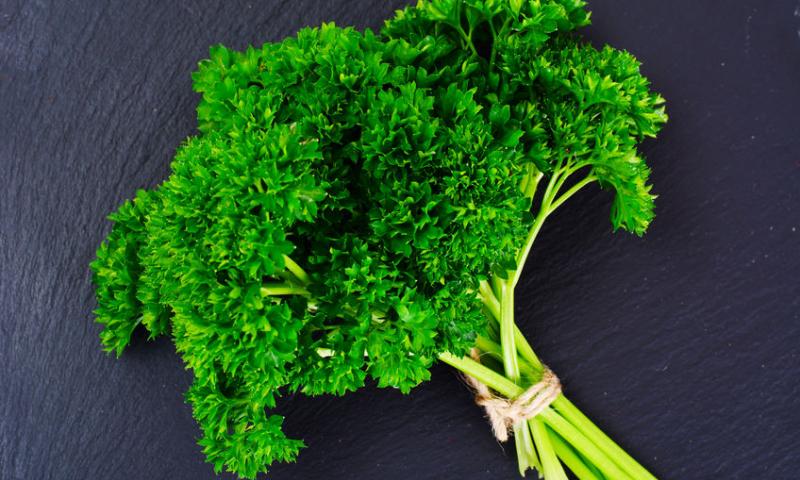 />
/>
Parsley or garden parsley (Latin Petroselinum crispum) is the most famous species of the genus Petroselinum of the family Umbilical (Apiaceae).
Parsley is a biennial plant of 30-100 cm high with a spindle-shaped thickened root. The stalk is erect and branchy. The leaves are shiny, triangular, double-bifurcated, dark green, glistening on top. It blooms in June-July. Flowers are greenish-yellow. Fruit is oblong-ovate.
Parsley is believed to have originated from Southeastern Europe, the Mediterranean region or western Asia. As a result of cultivation, it is now found throughout the world and has become wild in some areas.
Parsley also contains bioflavonoids and essential oils. Among other things, it has a high content of trace elements.
Parsley contains a large amount of chlorophyll, which is a natural pigment and is involved in oxidation reactions.
Fruits of parsley contain up to twenty-two percent of fatty oil, which includes flavonoids apiin and diosmin, petroselinic acid glycerides, apygenin glycerides and naringenin, as well as luteolin, etc. In addition, in fruits, there is from two to six percent of essential oil, in which there are coumarin, apiol, myristicin, a-pinene, apionic acid, allyl tetramethoxybenzene, etc.
We believe that the greatest gift you can give your family and the world is a healthy you.
Have a nice day!
*This article is for informational purposes only. We suggest consulting with a physician before using these or any other herbal supplements.
